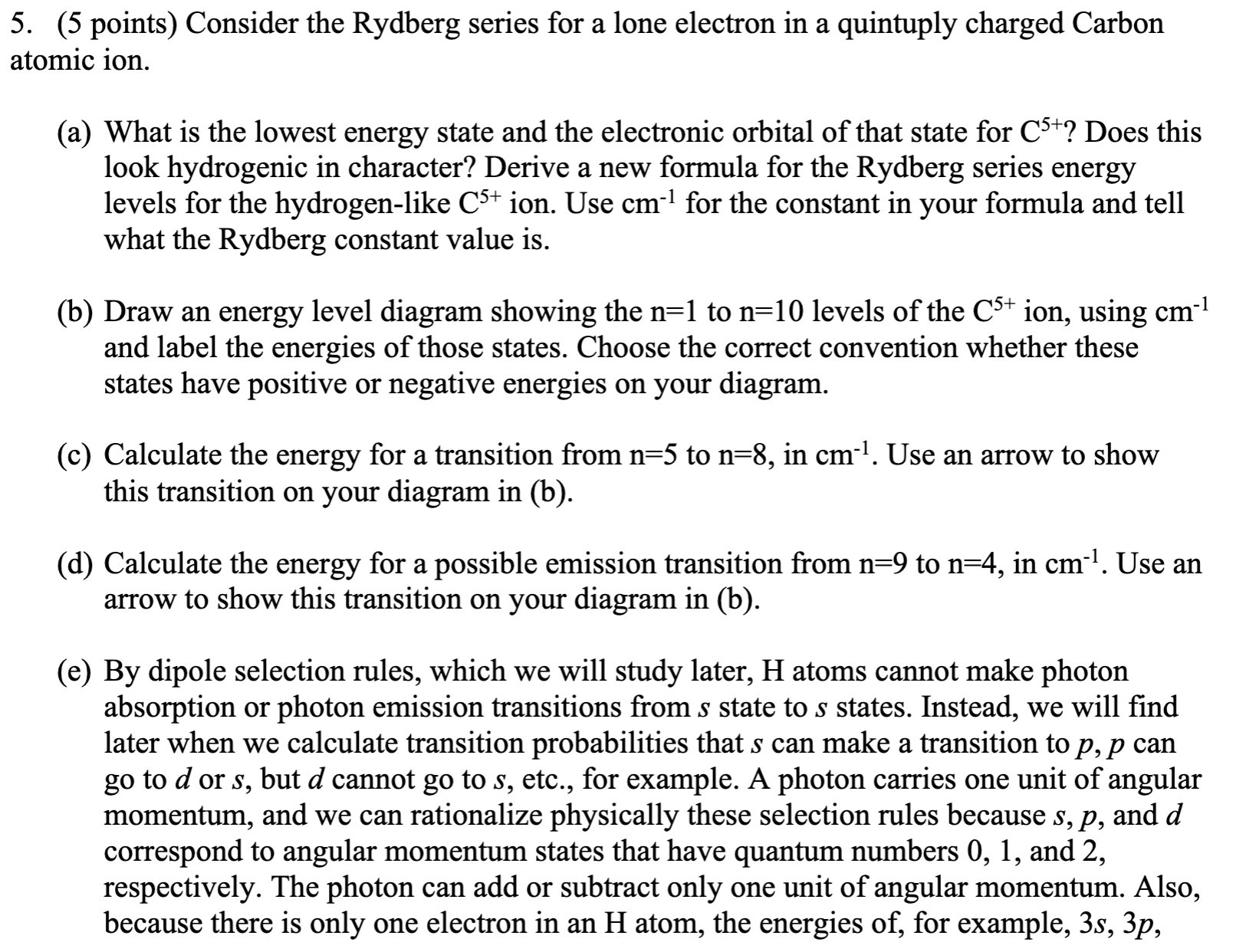Answered step by step
Verified Expert Solution
Question
1 Approved Answer
5. (5 points) Consider the Rydberg series for a lone electron in a quintuply charged Carbon atomic ion. (a) What is the lowest energy


5. (5 points) Consider the Rydberg series for a lone electron in a quintuply charged Carbon atomic ion. (a) What is the lowest energy state and the electronic orbital of that state for C5+? Does this look hydrogenic in character? Derive a new formula for the Rydberg series energy levels for the hydrogen-like C5+ ion. Use cm for the constant in your formula and tell what the Rydberg constant value is. -1 (b) Draw an energy level diagram showing the n=1 to n=10 levels of the C5+ ion, using cm and label the energies of those states. Choose the correct convention whether these states have positive or negative energies on your diagram. (c) Calculate the energy for a transition from n=5 to n=8, in cm. Use an arrow to show this transition on your diagram in (b). (d) Calculate the energy for a possible emission transition from n=9 to n=4, in cm. Use an arrow to show this transition on your diagram in (b). (e) By dipole selection rules, which we will study later, H atoms cannot make photon absorption or photon emission transitions from s state to s states. Instead, we will find later when we calculate transition probabilities that s can make a transition to p, p can go to d or s, but d cannot go to s, etc., for example. A photon carries one unit of angular momentum, and we can rationalize physically these selection rules because s, p, and d correspond to angular momentum states that have quantum numbers 0, 1, and 2, respectively. The photon can add or subtract only one unit of angular momentum. Also, because there is only one electron in an H atom, the energies of, for example, 3s, 3p, and 3d states are all identical (degenerate), so multiple possible transitions all overlap in energy. Given this information, discuss what possible actual state transitions might be underlying the H atom Rydberg series called Lyman, Balmer, Paschen, etc. Indicate what are some of the possible starting and ending states for each series in both absorption or emission. In discussing your answer, start with 1s (note, there is no 1p or 1d states), then progress to 2s, 2p, then 3s, 3p, 3d. Use an energy diagram to help sort out the transitions.
Step by Step Solution
There are 3 Steps involved in it
Step: 1

Get Instant Access to Expert-Tailored Solutions
See step-by-step solutions with expert insights and AI powered tools for academic success
Step: 2

Step: 3

Ace Your Homework with AI
Get the answers you need in no time with our AI-driven, step-by-step assistance
Get Started


